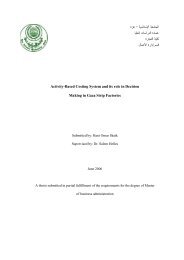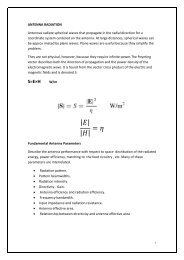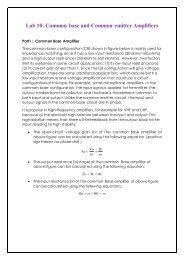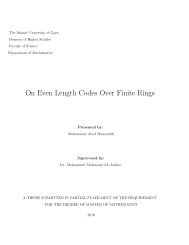A prActicAl guide Benchmarking in european Higher education
A prActicAl guide Benchmarking in european Higher education
A prActicAl guide Benchmarking in european Higher education
You also want an ePaper? Increase the reach of your titles
YUMPU automatically turns print PDFs into web optimized ePapers that Google loves.
CONCEPTS AND PRACTICES OF BENCHMARKING<br />
The European Network for Quality Assurance <strong>in</strong> <strong>Higher</strong> Education (ENQA<br />
2002) rightly states that ‘true benchmark<strong>in</strong>g’ is improvement-oriented. The<br />
<strong>in</strong>dispensable elements of true benchmark<strong>in</strong>g are: negotiation, collaboration,<br />
dialogue and develop<strong>in</strong>g a process for mutual understand<strong>in</strong>g. Other dist<strong>in</strong>ctive<br />
features of true benchmark<strong>in</strong>g are explicit and open goals. On the<br />
other hand ‘false benchmark<strong>in</strong>g’ is def<strong>in</strong>ed as rank-oriented or merely explorative<br />
without <strong>in</strong>terest <strong>in</strong> improvement. It has hidden purposes and it can<br />
even be perceived as simply spy<strong>in</strong>g. Fuzzy goals and undef<strong>in</strong>ed processes<br />
are typical false benchmark<strong>in</strong>g constituents. Performance measurement by<br />
us<strong>in</strong>g some benchmarks moves <strong>in</strong>to true benchmark<strong>in</strong>g when it def<strong>in</strong>es targets<br />
for improvement.<br />
Rank<strong>in</strong>gs and league tables of universities are <strong>in</strong> this sense perceived as<br />
false benchmark<strong>in</strong>g, s<strong>in</strong>ce they do not po<strong>in</strong>t to ways of improvement which is<br />
the essence of benchmark<strong>in</strong>g. Rank<strong>in</strong>gs conta<strong>in</strong> no <strong>in</strong>formation about good<br />
practices. Indicators of rank<strong>in</strong>gs and league tables are generally biased <strong>in</strong><br />
favour of large universities with large science schools, acknowledged traditions<br />
and history, abundance of professors, best-<strong>in</strong>-class equipment, extensive<br />
library collections, etc., leav<strong>in</strong>g small but effective universities little<br />
chance for top places (cf. Dill & Soo, 2005; Usher & Sav<strong>in</strong>o 2007). The need is<br />
<strong>in</strong>creas<strong>in</strong>gly felt for different types of rank<strong>in</strong>gs to compare similar <strong>in</strong>stitutions.<br />
Although rank<strong>in</strong>gs are popular for comparison, they provide little <strong>in</strong>formation<br />
about how the university reached the score and if they do, <strong>in</strong>dicators<br />
are often irrelevant to quality improvement of the higher <strong>education</strong><br />
<strong>in</strong>stitution. Rank<strong>in</strong>gs can, however, <strong>in</strong>itiate benchmark<strong>in</strong>g by serv<strong>in</strong>g as a<br />
start<strong>in</strong>g po<strong>in</strong>t <strong>in</strong> identify<strong>in</strong>g benchmark<strong>in</strong>g partners.<br />
46 A Practical Guide - <strong>Benchmark<strong>in</strong>g</strong> <strong>in</strong> European <strong>Higher</strong> Education

















